Animals & Ebola
Dr. Doug Aspros, AVMA
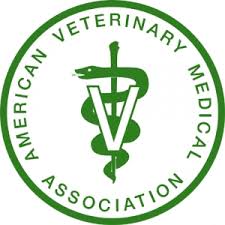 Dr. Doug Aspros from the American Veterinary Medical Association (AVMA) and the Center for Disease Control (CDC) have teamed up to bring you the latest information on the Ebola virus and your pet. Is your pet vulnerable? Probably not. But there are real risks you should worry about when it comes to animals and it's not Ebola. For example, many thousands of people died last year from Rabies alone.
Dr. Doug Aspros from the American Veterinary Medical Association (AVMA) and the Center for Disease Control (CDC) have teamed up to bring you the latest information on the Ebola virus and your pet. Is your pet vulnerable? Probably not. But there are real risks you should worry about when it comes to animals and it's not Ebola. For example, many thousands of people died last year from Rabies alone.
So what are the risks for our animals and Ebola? Dr. Aspros tells us that it is safe to say that there is always the potential for zoonotic transmission of a new disease, but there have been no reports of dogs becoming sick with Ebola or playing any role in the transmission of Ebola to humans.
Everyone has heard by now about the dog from Spain, named Excalibur, that had been living with a his guardian who died of Ebola and was euthanized without any reason to suspect that the dog would play any role in transmitting the disease to anybody else.
Another tragedy of the death of this dog was that it removed the potential to learn more about what actually happens to dogs that are exposed to anybody who has Ebola.
 Dr. Aspros tells us that there was an earlier outbreak of Ebola in 2005 in Africa, where dogs who were in contact with people who died of Ebola, were studied. The studies showed that there were no dogs that developed any kind of disease. The dogs were sampled and there was some evidence that they developed antibodies to the Ebola virus, but no evidence that they actually carried the virus, had an infection themselves, or spread it to any one or any other animals.
Dr. Aspros tells us that there was an earlier outbreak of Ebola in 2005 in Africa, where dogs who were in contact with people who died of Ebola, were studied. The studies showed that there were no dogs that developed any kind of disease. The dogs were sampled and there was some evidence that they developed antibodies to the Ebola virus, but no evidence that they actually carried the virus, had an infection themselves, or spread it to any one or any other animals.
The risks involved with Ebola and dogs are extremely low, but the one disease that is transmitted by dogs that we should be concerned about is rabies. Around 40,000 people die every year from exposure to dogs infected with rabies.
So should we be worried about our other pets? Ebola is a disease that does have a wild animal vector (any agent - person, animal or microorganism, that carries and transmits an infectious pathogen into another living organism) that is why the disease has been resistant to any of our control efforts in Africa. But there is no evidence that domestic animals of any sort carry a risk of being affected with Ebola, carrying the disease themselves or transmitting Ebola to any other animal.
No one is sure how Ebola started, but our best guess is that Ebola seems to have started from fruit bats. Fruit bats, the world over, seem to carry a bunch of diseases, viruses in particular, that don't cause them disease, but can cause some pretty serious diseases in humans. However, other primates can develop Ebola.
So should you worry about your pets and Ebola – the answer is no!
http://www.avma.org/ebola
How Good Is Your Dog Food?
Dr. Mike Sagman, Dog Food Advisor
 Dr. Mike Sagman was a dentist, until he gave that up to create an unbiased website that reviews every pet-food on the market. Nobody is in his pockets, although they try. He's here to tell us how pet-food manufacturers deceptively use loopholes to make their label read better. Find out how your food stacks up.
Dr. Mike Sagman was a dentist, until he gave that up to create an unbiased website that reviews every pet-food on the market. Nobody is in his pockets, although they try. He's here to tell us how pet-food manufacturers deceptively use loopholes to make their label read better. Find out how your food stacks up.
Mike Sagman is Editor and Creator of The Dog Food Adviser, which is published as a public service to help you make a more informed decision when shopping for dog food.
Mike became passionate about canine nutrition as the result of a personal tragedy. In the late 1990's, he and his wife were watching television when they saw a story about a dog abuse case. It caught him at just the right moment, a time when he recently had lost his dog, so he decided to adopt the abused dog. Because of the severe abuse she had been through, he said it was one of the most difficult experiences he had. He and his family spent a considerable amount of time nursing her back to health and named her Penny.
But suddenly in 2007, she got very sick and ended up being a victim of the largest pet food recall in U.S. history, of over 100 different brands of food, because they were tainted with melamine, which was added to the wheat gluten. This was added to intentionally defraud the actual manufacturers, by making it look like the products contain more protein than they actually did. The result killed thousands of dogs.
So, after that heartbreaking experience, he made it his personal goal to never again let anything like that happen to any dog in his care, and to make sure what happened to Penny could never happen to your dog either.
The industry is making it harder to evaluate dog food, because they keep releasing more kinds of food. These include grain free and gluten free.
They also confuse us with dog food labels. The law requires that the ingredients on labels (even for human foods) be listed in order of the pre-cooking or dry weight. But it is very misleading. You have probably heard not to buy pet food that doesn't list meat as the first ingredient. It is so easy for the industry to fool us on this one. For example, you might have a product, which is mainly grain like rice, which could make up 60 percent of the product. That would then make meat obviously not the first item. But, they take that rice and divide it into different types such as brown rice and brewers rice. What they have accomplished by doing this is that now each type of rice compiles about 10 percent, so now the meat is moved to the number one ingredient, even though 'rice' is still the major ingredient.
The Dog Food Advisor is a blog written and edited by Mike and his staff. The views and opinions expressed here are presented in good faith and are strictly their own.
They do not accept money or samples from pet food companies in exchange for special consideration in the preparation of their reviews or ratings. They tell everyone not to send them food, and if they do receive product they don't open it and immediately send it back.
The Dog Food Advisor's approach to evaluating dog food is based upon one important principle: No dog food can ever be magically better than the ingredients that were used to make it. That's why it's so important for you to know what's actually in your dog's food before you buy it. And the only reliable way we know to do that is to carefully examine the label.
So, how does your dog food rate? Check it out!
http://www.dogfoodadvisor.com
Dean Koontz is Back
Dean Koontz, Ask Anna
 The award-winning, best-selling author Dean Koontz returns to Animal Radio® airwaves to tell us the story about his dog, Anna. According to Dean, Anna purchased a computer and started answering advice emails. Tune in to hear the rest of the story.
The award-winning, best-selling author Dean Koontz returns to Animal Radio® airwaves to tell us the story about his dog, Anna. According to Dean, Anna purchased a computer and started answering advice emails. Tune in to hear the rest of the story.
Dean tells us that his Golden Retriever Anna went online and bought herself a computer. Anna kept computer in Dean's exercise room, which she knows he won't go into if he can help it. By the time Dean found out, Anna had been giving advice to dogs all over the country, even though the ones that need it the most is humanity!
Anna is Dean's second Golden Retriever. Like his first Golden, Trixie, Anna also came from Canine Companions for Independence, which provides assistance dogs for people with severe disabilities. His first dog Trixie was in service but failed out because she had to have surgery on her elbow and was no longer able to work after that. But with Anna, she made it through 22 months of 24 months of education to be an assistance dog but they could not break her from being distracted by birds, which could be disastrous if you are tied to a wheelchair!
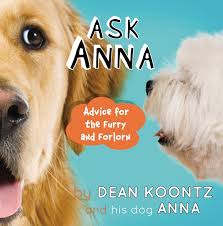 If you are familiar with Dean's books, you will know he has a dark side. However, he tells us that there is no dark side to Anna's writing, as there is no dark side to a golden retriever!
If you are familiar with Dean's books, you will know he has a dark side. However, he tells us that there is no dark side to Anna's writing, as there is no dark side to a golden retriever!
Dean's first dog Trixie was also a writer, but Anna was adamant that she was never going to be a writer, as one in the family is more than enough. However, writing seems to run in the Koontz household. Deans says if you live with him long enough, you are going to start writing! Trixie wrote three books and Dean wrote a book about Trixie called A Big Little Life.
Now, here's Anna with her own book of advice, Ask Anna. From insecure Labrador Retrievers to depressed Great Danes, fending off admirers to contemplating the wonderful creation of the tennis ball, and everything else in between, Anna provides encouragement, a little bit of mockery, and great reminders of the canine supremacy over both felines and humans.
Dean doesn't know where all of this 4-footed writing is going to go, but dog lovers of all ages will appreciate ASK ANNA's humorous insight coupled with expressive, adorable photographs. Even more so, they will appreciate that the profits from their purchase will be given to Canine Companions for Independence, which provides assistance for people with disabilities.
http://www.deankoontz.com
Become A Better Friend To Your Cat
John Bradshaw, Cat Sense
 John Bradshaw is arguably the top expert on cats. He's back to dispel myths and tell us what goes on inside the head of our kitties. For instance, did you know cats can hear very-low and very-high frequencies? While cats can't see in the dark, they can see only a few colors well in dimly lit areas.
John Bradshaw is arguably the top expert on cats. He's back to dispel myths and tell us what goes on inside the head of our kitties. For instance, did you know cats can hear very-low and very-high frequencies? While cats can't see in the dark, they can see only a few colors well in dimly lit areas.
Cats have been popular household pets for thousands of years, and their numbers only continue to rise. Today there are three cats for every dog on the planet, and yet cats remain more mysterious, even to their most adoring owners. Unlike dogs, cats evolved as solitary hunters, and, while many have learned to live alongside humans and even feel affection for us, they still don't quite 'get us' the way dogs do, and perhaps they never will.
In Cat Sense, renowned anthrozoologist John Bradshaw takes us further into the mind of the domestic cat than ever before. He can answer the age-old questions like, does a cat always land on its feet?
John says its true, because cats have the most extraordinary reflexes, but how they evolved them, no one knows. When a cat falls, provided they have time to spin around and correct themselves, they will land on all four feet. But if the fall is too short, less than 6 to 10 feet, the cat may not have time to correct itself. While hard to believe, cats actually get injured from shorter falls more often than if they fell from greater heights, like 12 to 15 feet.
Another question is why do fireman have to rescue cats from trees? They climb up there, why can't they climb down? The reason is because of the way their claws face. Their claws face backwards, which enable them to catch things, but aren't very good for climbing. Too bad they can't figure out that they can just turn around and come down backwards!
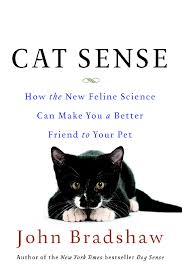 There is a South American cat species called a margay, which actually lives in trees and its hind feet are double-jointed, so they can actually twist them around and point them backwards to walk down a tree.
There is a South American cat species called a margay, which actually lives in trees and its hind feet are double-jointed, so they can actually twist them around and point them backwards to walk down a tree.
We've all seen the glowing eyes of a cat in the dark, but can they see better than us? They can see better than us in the dark. Years ago, wild cats didn't have much to do in the daytime, so they evolved hunting in the half-light at dusk and dawn in the moonlight. Of course, our domesticated cats no longer have to hunt for their food, but they still have their ancestor's eyes, which are large. In fact, cats' eyes are almost as large as a human eye, but they appear so much larger because they are in a much smaller skull. They do see some colors. They also love the sunshine, but will blink because it hurts their eyes, as their eyes are much more sensitive than ours.
Can cats hear better than we can or better than dogs? They may not be better at hearing, but they are able to hear high-pitched sounds (squeaking mice) and low-pitched sounds (men talking). They shouldn't be able to hear men, because their ears are smaller than ours and they have a special designed inner chamber of the ear. No one knows why they have this special chamber, but it allows them to listen to men as well as women. If they didn't have this chamber, they would only be able to hear women and they would completely ignore men.
We discussed the background of one of the cats here at the Animal Radio® Studios, named 'Uh-Oh.' Her feral mother gave birth on our balcony and we were able to pull the kittens from her at the age of 4 weeks and bottle-fed them, so they could be socialized. 'Uh-Oh' is now overly affectionate and thinks that Host Hal Abrams is her mother!
If a kitten doesn't meet a person at all until they are 8-9 weeks of age, it can be pretty difficult to turn around. After 9 weeks, their social preferences are pretty much fixed. However, it doesn't take a great deal of contact from a human. They can simply go to the nest where the kittens are and pet them a few times before they are 8 weeks of age. This sort of opens up the window and allows them to go on learning about humans and how to interact with them.
So in the case of our studio cat, 'Uh-Oh,' she got the early attention and then at four weeks received some pretty intense interaction. As a result, she turned into a more attentive cat than the average cat. But, it is crucial that they experience a kind human hand before they are 8 weeks old.
It was also surprising to learn that the placement in the womb can affect a cat's personality after birth. This happens when a female baby cat is between two males in the womb. The very early male hormones produced by the male kittens will leak out of the amniotic fluid and into the female. When she is born, she will play a bit rougher like a male kitten. This does not mean she will be a masculinized cat for her whole life, she is still a female. And if you happen to get a litter of all female cats, which is pretty rare, they are much gentler and much less rambunctious in their play.
What about the myth that all white cats are deaf? While this is not true, many white cats are deaf. This is because the gene for deafness is very close to the gene for the white coat. Many deaf cats are not good mothers, as they don't hear their babies' cries, which are crucial to the maternal instinct. This often requires human intervention.
Cat Sense is a must-read for any cat lover, offering humane, penetrating insights about the domestic cat that challenge our most basic assumptions and promise to dramatically improve our pets' lives and ours.
http://www.catsensebook.com
"HERO PEOPLE OF THE WEEK" - Sarah Timms, LoveAnimals.org
 This week's Zeuterin Hero Person created a crowd-funding website similar to Kickstarter to help pay for much-needed pet projects. Whether it's funding surgery or feeding homeless animals, Sarah Timms wants to use modern fundraising techniques help pets live happy and healthy lives.
This week's Zeuterin Hero Person created a crowd-funding website similar to Kickstarter to help pay for much-needed pet projects. Whether it's funding surgery or feeding homeless animals, Sarah Timms wants to use modern fundraising techniques help pets live happy and healthy lives.
LoveAnimals.org is a progressive new nonprofit crowdfunding website that helps animal nonprofits throughout America connect with donors to raise money for critically needed projects. Sarah Timms, Founder & President, explains how it works.
Sarah got the idea after reading an article from Stanford that talked about this new concept of crowdfunding. She thought it would be really cool if there were a platform like this for animal projects where animal lovers could go and donate to different campaigns being run by different agencies all in one place. She thought it was too good an idea not to do, and made it happen, launching in May 2013.
At LoveAnimals.org, you can find anything from a cat or dog that needs medical care, to groups that are trying to raise money for food or medical supplies, all the way to big charities who are raising monies for wildlife campaigns in Africa.
Did you know Animal welfare and wildlife conservation non-profits currently receive only 2-percent of all giving in America? Sarah believes that crowdfunding can increase this amount, and in fact, it is her mission to increase that amount, using her website.
 On another crowdfunding site, Kickstarter, if you don't raise the money to reach your goal, you are left with nothing. But, at LoveAnimals.org, that's not how it works, you still get the money. Because they are working with non-profits who are raising money through different avenues, if they run a campaign at LoveAnimals.org, providing they can still complete the campaign as described using funds raised from elsewhere, they get any amount that they raised.
On another crowdfunding site, Kickstarter, if you don't raise the money to reach your goal, you are left with nothing. But, at LoveAnimals.org, that's not how it works, you still get the money. Because they are working with non-profits who are raising money through different avenues, if they run a campaign at LoveAnimals.org, providing they can still complete the campaign as described using funds raised from elsewhere, they get any amount that they raised.
How can Sarah be sure that organizations that ask for monies are legitimate? Sarah works very hard to make sure that anyone who asks for monies really needs it. They will check the board of directors of organizations and the financial statements, and for individual people who ask for money for vet bills, they never release money to the public. That person would have to designate the veterinary clinic that will be performing the surgery and the clinic will be paid directly. Sarah wants to make sure that anyone who donates, whether it's $2.00 or $2,000, is completely confident that the money will go exactly where they thinks it's going.
Sarah says LoveAnimals.org exists to help animal non-profits raise more money and to provide a fun way for animals lovers to get involved with animal charities so they can help more animals!
http://www.loveanimals.org
Thinking Globally. Acting Locally. Do you know someone that should be nominated for our Hero Person of the Week? Send us an email to: YourVoice@AnimalRadio.com.

Animal Radio's HERO PEOPLE is brought to you by Zeuterin a safe, permanent and virtually painless alternative to surgical castration.
 The Dogfather's Grooming Tip with Joey Villani
The Dogfather's Grooming Tip with Joey Villani
How To Lessen Shedding
Joey received an email from someone who has a shorthaired mixed dog that is going through extreme shedding. He explains that what works well, especially on a shorthaired dog, are just plain water and a brush.
There are two options. If you are able to bathe your dog, just towel dry them and let the air completely dry them off. Use a good de-greasing pet shampoo and wash your pet really well. What this will do is separate everything, so nothing will bind together. So when the coat dries, you will have a lot of loose coat that is ready to come out.
The mistake most people make is that they don't use a good cleaning shampoo, so if there is any dirt or oil left behind, it will still hold the loose coat back, which will eventually fall off all over your house.
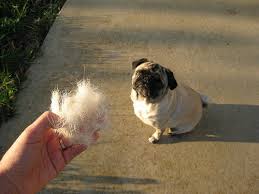 So just let your pet air dry, and once they do, you will notice that if you just rub your hand over them, you will get a ton of coat off.
So just let your pet air dry, and once they do, you will notice that if you just rub your hand over them, you will get a ton of coat off.
Just remember, a dog that is a little anxious about a bath, or the more nervous they are, the more they are going to shed. So, you might see the shedding reduced an hour or so after their bath.
 Pheromones In Puppy Training -Dr. Debbie
Pheromones In Puppy Training -Dr. Debbie
So you just got a new puppy and you have all your training tools at the ready, the collar, leash and dog crate. But beyond that, do you have the one thing that can make your training tasks easier all around? Tap into your puppy's own sense of smell using canine pheromones, and ease your new pup's training and transition into the home.
Pheromones are scent signals emitted by all animal species, including humans. Various pheromones work under the radar to influence the perceptions and behaviors of others within a species.
Shortly after whelping, a pheromone is emitted from the bitch's sebaceous (oil) glands located between the mammary glands. The pheromone, dubbed the canine appeasing pheromone, reassures the puppies, calms them and facilitates nursing. The bitch stops emitting this pheromone as the pups mature, but all dogs retain the ability to "read" this pheromone. Not only do older dogs recognize this pheromone, but it continues to have a natural calming effect on canines of all ages.
In veterinary behavior cases, the dog appeasing pheromone is used for dogs with noise phobias, car travel anxiety, separation anxiety, and other fearful situations. Various forms are available including pheromone collars, plug in diffusers and sprays. The canine appeasing pheromone doesn't sedate the dog; rather it decreases fear and excitability.
The dog appeasing pheromone is also helpful for newly adopted puppies. Those first few days to weeks in a new home are full of changes for the pup faced with novel environments far from the comfort of mother and siblings. The dog appeasing pheromone has been shown to ease the transition of the pup into new home and improve sociability and training during a pup's critical socialization period.
Pheromone Research
For skeptics that need to see the proof in the studies, veterinary behavior studies have examined the positive influence of the dog appeasing pheromone. When comparing treatment responses for dogs with separation anxiety, the use of the dog appeasing pheromone equaled the benefit of the anti-anxiety medication, amitriptyline.
One study looked at 66 puppies as they settled into new homes after adoption. Approximately half of the puppies wore a pheromone collar and half wore a placebo. The study found that puppies wearing a pheromone collar displayed significantly fewer nuisance behaviors like vocalizations or scratching within 3 days of adoption. Pups wearing the pheromone collar woke their owner's less during the night and displayed fewer signs of distress and vocalizations throughout the course of the study.
The researchers concluded that pheromone collars helped both the pup and family. Pups were less stressed and adapted easier. By decreasing the pup's stress and fearful behaviors, the pet owners found a more enjoyable bonding experience with the new pup and faced less frustration through the training process.
In another study, puppies 8 to 15 weeks were enrolled in an eight-week long puppy socialization and training class. Half wore a pheromone collar and the other half wore a placebo collar. The pups wearing the collar were calmer in the face of novel experiences and displayed less fear, anxiety, and aggression. In the end, the pups with pheromone collar not only were less nervous, but had fewer behavioral problems and learned better. And a long-term effect on sociability was recognized in dogs up to one year after the class and study was completed.
Pheromones and My Pup
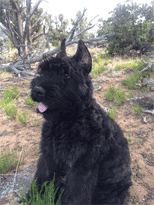 As the new owner of a nine-week old Bouvier puppy named Nikki, I used both the pheromone collar and diffuser upon welcoming my new pup home. One day before bringing Nikki home, I placed a pheromone diffuser close to the puppy crate, where it would have maximum benefit during her first nights in the kennel away from mother and siblings. Immediately upon leaving the breeder's home, Nikki was fitted with a pheromone collar to serve as a source of reassuring pheromones that went everywhere she did. The pheromone collar has become a tool in Nikki's socialization. It's on her when she meets new people or animals, when she explores new environments, and during puppy kindergarten class.
As the new owner of a nine-week old Bouvier puppy named Nikki, I used both the pheromone collar and diffuser upon welcoming my new pup home. One day before bringing Nikki home, I placed a pheromone diffuser close to the puppy crate, where it would have maximum benefit during her first nights in the kennel away from mother and siblings. Immediately upon leaving the breeder's home, Nikki was fitted with a pheromone collar to serve as a source of reassuring pheromones that went everywhere she did. The pheromone collar has become a tool in Nikki's socialization. It's on her when she meets new people or animals, when she explores new environments, and during puppy kindergarten class.
Did pheromones help in my pup's transition and training? The four hour drive home from the breeders was a dream, no crying or whining the entire trip. Now three weeks later from acquiring my pup, and Nikki never soiled in her kennel during the day or night. I'll admit I had my share of interrupted sleep in the first two weeks, but most of Nikki's night time wakes were for genuine elimination needs. Overall her transition into the home was smooth and lacked the wailing, inconsolable cries of a stressed pup.
The canine appeasing pheromone isn't a magic bullet though. Nothing matches a quality pup obtained from a reputable breeder who focuses on health, genetics, and early socialization. Likewise pheromones do not replace the hard work and consistent training efforts that any new pet owner must provide. However, by adding the the canine appeasing pheromone to your new puppy training, you can help your pup become the best he or she possibly can.
For more information on the DAP products, visit CEVA.
Featured veterinarian known as "Dr. Debbie" on national pet radio program, Animal Radio. Ebook author of "Yorkshire Terriers: How to Be Your Dog's Best Friend"; "Pugs: How to Be Your Dog's Best Friend"; "Mini Schnauzers: How to Be Your Dog's Best Friend"; and "Shih Tzu: How to Be Your Dog's Best Friend."
http://www.drdebbie
It's a Wacky Wednesday Here at the Animal Radio® Studios
WackyWed Contest IS ON - LIKE your FAVORITE pic and the pic with the most LIKES & shares is the week's winner and will receive AWESOME prizes from Wahl Pets.
TO ENTER Send us your FUNNY pet pic to WackyWed@AnimalRadio.com - (Please put WACKYWED in the subject line & give us your pet's name, your name & where you hail from) If YOUR pic is chosen then spread the word to your friends & family on Wednesday - the pics w/the most LIKES and SHARES will be the winner!
This week's Wacky Wednesday prize is a great package for your pet from Wahl Pets, which includes:
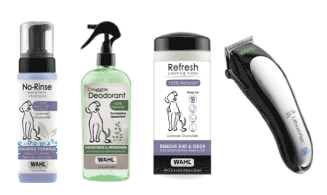 • Wahl All-Natural Waterless Shampoo. This no muss, no fuss all-natural product literally takes the dirty work out of bathing. Pet owners simply apply the foaming agent to their pet's coat to remove top-level dirt and odors, resulting in a soft, clean coat. It's a practical and convenient option for in between baths.
• Wahl All-Natural Waterless Shampoo. This no muss, no fuss all-natural product literally takes the dirty work out of bathing. Pet owners simply apply the foaming agent to their pet's coat to remove top-level dirt and odors, resulting in a soft, clean coat. It's a practical and convenient option for in between baths.
• Wahl All-Natural Doggie Deodorant. A fresh approach to keeping pets smelling good, Wahl's Doggie Deodorant is alcohol-free and made from plant-derived ingredients, making it safe for spraying directly onto pets to eliminate odors.
• All-Natural Pet Wipes. For the on-the-go pet owners, clean ups are just as easy as the swipe of a wipe. Wahl's new and all-natural pet wipes help remove dirt and odors for cleaner paws, face and ears without any skin irritations.
• Wahl Lithium Ion Pro Series Rechargeable Pet Clipper. This powerful rechargeable pet clipper means at-home pet grooming can now be done in the comfort of your own…backyard. It boasts twice the run time and three times more power than standard rechargeable pet clippers.
Wahl Pet Products - Your Home for Home Dog Grooming.

Join Animal Radio® on Facebook for Wacky Wednesday! Win great prizes every week for your wacky pet pictures. Last month we gave out goodies from Dexas, Stella & Chewy's, WetNoz, Best Friend Botanicals, PetMate, West Paw Design and more. Visit us on Facebook now.
Animal Radio® News with Tammy Trujillo
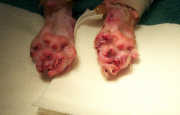 Declawing Can Have Horrifying Results
Declawing Can Have Horrifying Results
A recent study found that many vets don't know how to do the declawing procedure, which can have horrifying results. In many cases, bone fragments are left behind in the toe, and if a fragment includes part of a nail bed, then the claw can actually regrow inside the paw. It's one reason that declawed cats sometimes suddenly refuse to use the litter box. Their paws hurt too much to scratch the litter. Declawing is now banned in at least 22 countries. It's banned in several states and many cities here in the U.S., but an estimated 25-percent of all cats in the U.S. are declawed.
Thanksgiving Dog-A-Thon
Thanksgiving evening this year will be going to the dogs, thanks to Fox Network and the two-hour 'Great American Dog-a-Thon.' The show is centered around rescue dogs, featuring stories of rescue dogs, viral videos starring rescue dogs and stories about the people who do the hard work saving dogs. There are also a lot of celebrities who will introduce rescue dogs and give people the info on how to adopt or foster the dogs. Hilary Swank will host the show with other celebs including Scarlett Johansson, Miranda Lambert, and you cannot do a pet show on TV without Betty White, who will also be there.
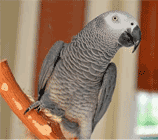 Lost Parrot Returns Speaking Spanish
Lost Parrot Returns Speaking Spanish
Nigel the talking Parrot is back at home where he belongs in Torrance, California after being missing for four years. No one really knows where he's been, but when he was last seen he spoke English with a British accent and now he speaks Spanish. A veterinarian had been running ads for her own lost parrot and was contacted by someone who had found an African Grey. It wasn't her bird, but a check of the microchip led her to Nigel's owner. Everyone was surprised by the reunion including Nigel, who bit his person during the re-introduction.
Cannabis Based Pet Foods, Treats And Oil
Laws against the use of marijuana for medical and now recreational use are being shot down, so it's really no surprise that some folks are getting a bit entrepreneurial with the stuff. One company in San Diego has developed cannabis based pet foods, treats and oil that it says can help animals deal with anxiety, digestive problems and seizures. Because it's all made with the cannabis compound that has medical properties, the animals don't get high. The company still needs regulatory approval to sell the products, but says it is taking orders.
 Owners Sell Cat With House
Owners Sell Cat With House
If you were having trouble selling your home, would you throw in your pet cat to seal the deal? A couple in Melbourne, Australia did just that. The house was up for auction, but nobody hit the reserve price on the house. The child of one of the bidders had fallen in love with the sellers' four-year-old Ragdoll kitty named Tiffany. They made an offer on the house, provided Tiffany was part of the deal. The sellers upped the price by $140,000 and the deal was done.

NEWS UPDATE brought to you by Drs. Foster & Smith, affordable pet supplies. Low prices every day, so you save on every order.
 Listen to the entire Podcast of this show (#778)
Listen to the entire Podcast of this show (#778)





